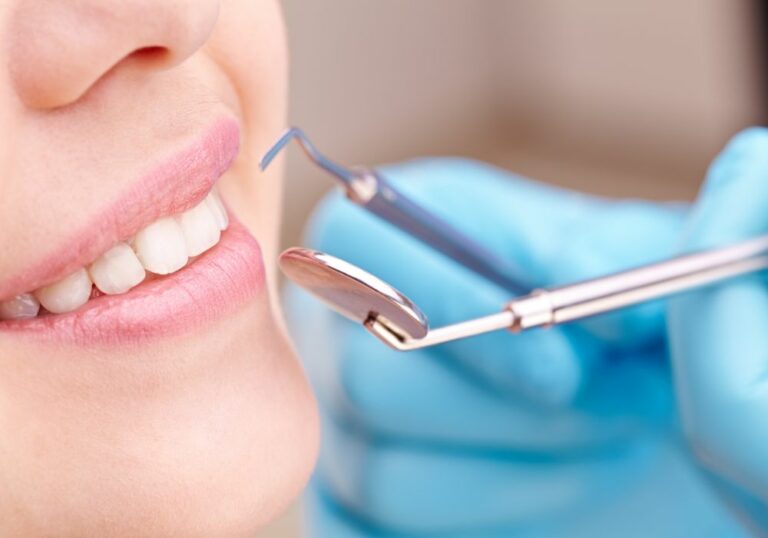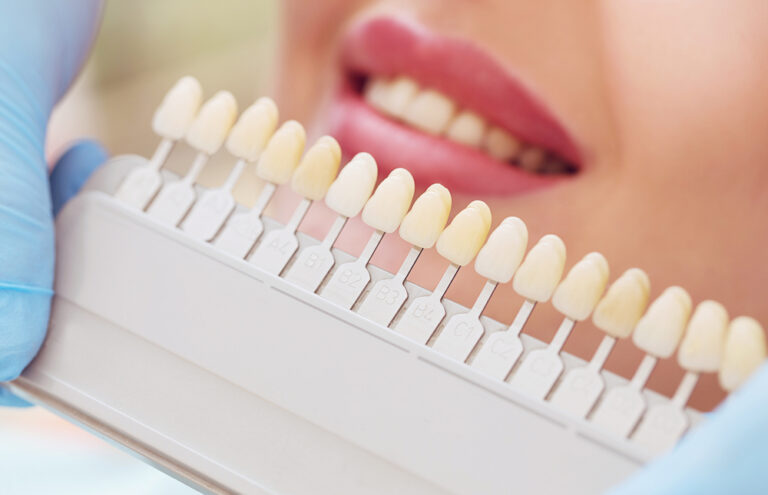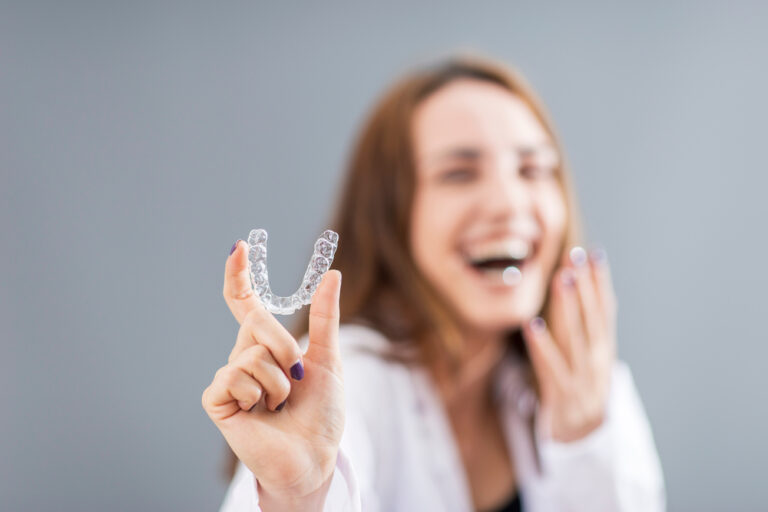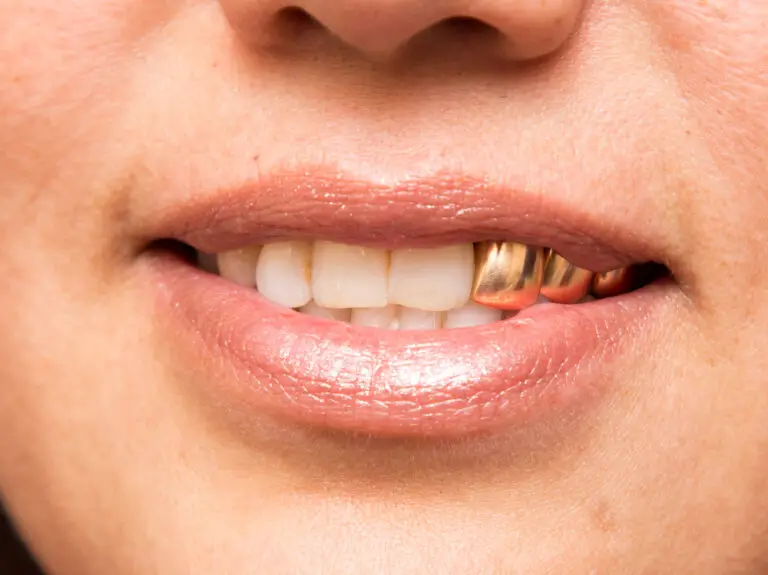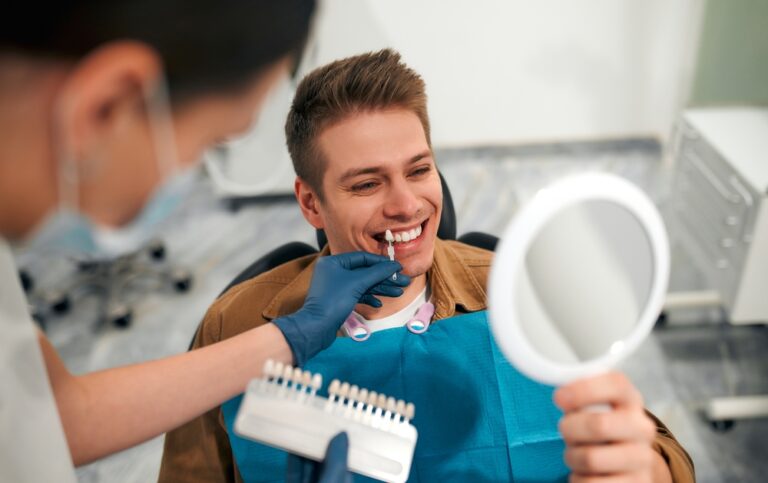Do you have tetracycline-stained teeth? If so, you’re not alone. Many people who have taken tetracycline antibiotics have experienced tooth discoloration as a side effect. The good news is that there are several options available to help improve the appearance of your teeth.
Tetracycline is an antibiotic that was first discovered in 1945 and is still commonly used today to treat a variety of bacterial infections. Unfortunately, one of the side effects of tetracycline use is tooth discoloration. The antibiotic can bind to the calcium in your teeth, causing them to turn yellow, brown, or gray. The severity of the staining can vary depending on factors such as the length of treatment and the dosage used.
If you’re unhappy with the appearance of your tetracycline-stained teeth, there are several options available to help improve their appearance. These include professional teeth whitening, dental bonding, porcelain veneers, and crowns. Your dentist can help you determine which option is best for you based on the severity of your staining and your overall dental health.
Understanding Tetracycline Stained Teeth
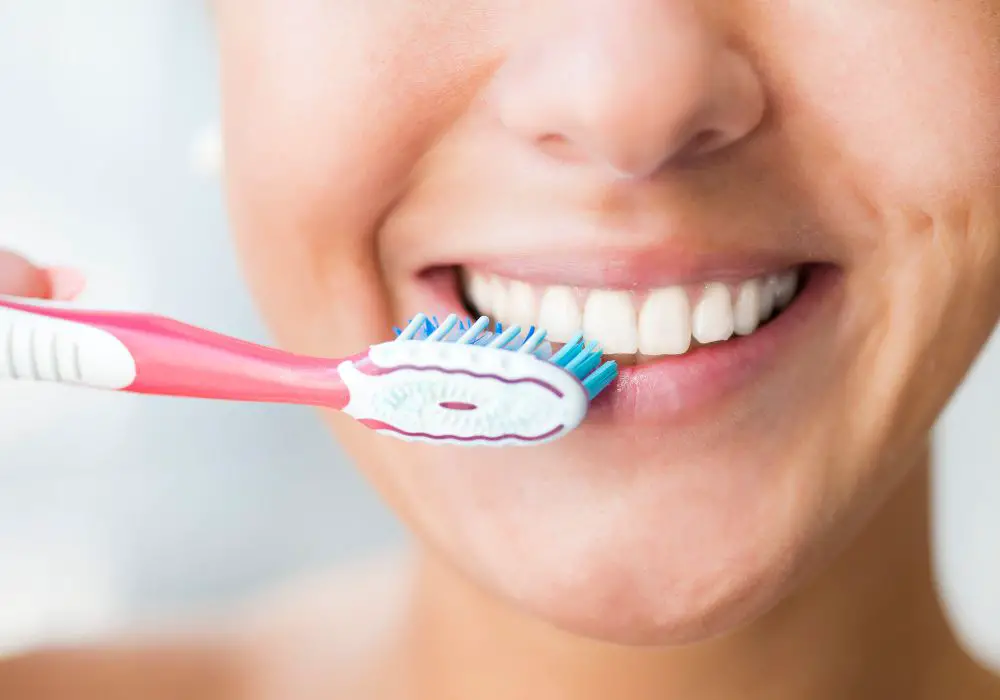
If you have been taking tetracycline antibiotics during your childhood or adolescence, you may have noticed that your teeth have become discolored or stained. Tetracycline stained teeth are a common side effect of taking this type of medication, and they can be difficult to treat.
Tetracycline is an antibiotic that is commonly used to treat a variety of bacterial infections, including acne, respiratory infections, and urinary tract infections. When tetracycline is taken during tooth development, it can become incorporated into the tooth structure, causing it to become discolored.
The severity of the staining depends on several factors, including the length of treatment, the dosage, and the stage of tooth development at the time of exposure. Children who are exposed to the antibiotic for a longer period of time and at a higher dosage are more likely to have a higher degree of tooth discoloration.
It is important to note that tetracycline stained teeth are not a sign of poor oral hygiene. Even if you brush and floss regularly, you may still experience this type of discoloration if you have taken tetracycline antibiotics during tooth development.
In the next section, we will discuss some of the treatment options available for tetracycline stained teeth.
Causes of Tetracycline Staining
Tetracycline staining occurs when the antibiotic tetracycline is taken during tooth development. The medication binds to the calcium ions in the teeth, causing discoloration that can range from yellow to brown or gray. The staining is usually permanent and can be a cosmetic concern for many people.
Tetracycline staining can occur in both primary and permanent teeth. The severity of the staining depends on the dosage, duration, and timing of the medication. The following factors can contribute to tetracycline staining:
- Dosage: The higher the dosage of tetracycline, the more likely it is to cause staining.
- Duration: The longer the duration of tetracycline use, the more likely it is to cause staining.
- Timing: Tetracycline taken during tooth development is more likely to cause staining than when taken after the teeth have fully developed.
- Age: Children under the age of eight are more susceptible to tetracycline staining because their teeth are still developing.
- Type of tetracycline: Certain types of tetracycline, such as doxycycline, are less likely to cause staining than others.
It’s important to note that tetracycline staining is not caused by poor oral hygiene or diet. However, good oral hygiene practices can help prevent further staining and maintain the overall health of your teeth.
Prevention of Tetracycline Stains
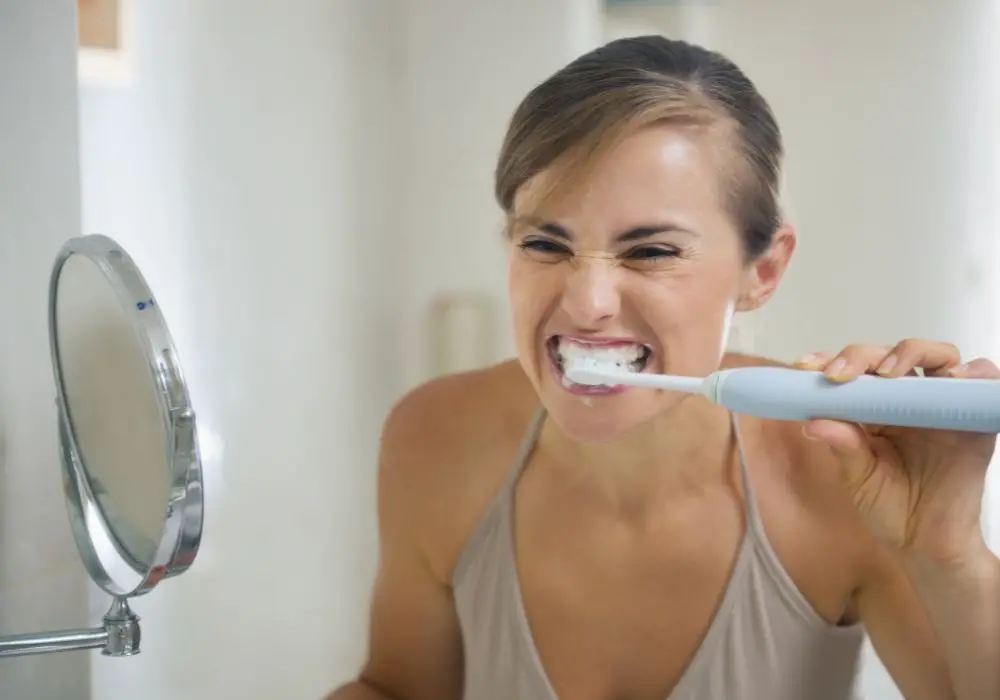
If you are taking tetracycline or any other medication that can cause tooth discoloration, there are steps you can take to prevent or minimize the staining.
Proper Medication Use
The most important step in preventing tetracycline stains is to use the medication properly. Follow your doctor’s instructions carefully, and never take more than the recommended dose. If you are taking tetracycline, avoid taking it with milk or other dairy products, as this can reduce its effectiveness and increase the risk of staining.
Regular Dental Checkups
Regular dental checkups are essential for preventing and managing tetracycline stains. Your dentist can monitor the condition of your teeth and catch any staining early, before it becomes severe. They can also provide advice on how to minimize staining and recommend treatments to improve the appearance of your teeth.
During your dental checkup, your dentist may recommend the following:
- Professional cleanings: Regular professional cleanings can help remove surface stains and prevent them from becoming more severe.
- Whitening treatments: Your dentist may recommend a professional teeth whitening treatment to improve the appearance of your stained teeth. However, it’s important to note that whitening treatments may not be effective for severe staining.
- Restorative procedures: In some cases, restorative procedures such as veneers or crowns may be necessary to improve the appearance of severely stained teeth.
By following these tips and working closely with your dentist, you can prevent and manage tetracycline stains and enjoy a brighter, healthier smile.
Treatment Options for Tetracycline Stained Teeth
If you have tetracycline stained teeth, there are several treatment options available that can help improve the appearance of your teeth. Here are three common options:
Teeth Whitening
Teeth whitening is a popular option for treating tetracycline stained teeth. This treatment involves using a bleaching agent to remove surface stains and lighten the color of your teeth. There are several different types of teeth whitening treatments available, including in-office treatments and at-home kits.
In-office treatments are typically more expensive but can provide faster and more dramatic results. At-home kits are more affordable but may take longer to achieve the desired results. It’s important to talk to your dentist about which option is best for you.
Dental Veneers
Dental veneers are another option for treating tetracycline stained teeth. Veneers are thin shells made of porcelain or composite resin that are bonded to the front of your teeth. They can be used to improve the appearance of teeth that are discolored, chipped, or misshapen.
Veneers are a more invasive option than teeth whitening, as they require the removal of a small amount of tooth enamel. However, they can provide a more dramatic improvement in the appearance of your teeth.
Composite Bonding
Composite bonding is a less invasive option for treating tetracycline stained teeth. This treatment involves applying a tooth-colored resin to the surface of your teeth to improve their appearance. Bonding can be used to cover up stains, chips, or gaps in your teeth.
Bonding is a more affordable option than veneers and does not require the removal of any tooth enamel. However, it is not as durable as veneers and may need to be replaced more frequently.
Overall, there are several treatment options available for tetracycline stained teeth. Talk to your dentist to determine which option is best for you based on your individual needs and budget.
Cost and Considerations of Treatments

When considering treatment options for tetracycline stained teeth, cost is an important factor to consider. The cost of treatment can vary depending on the severity of the staining and the type of treatment chosen. Here are some cost considerations for the most common treatments:
Teeth Whitening
Teeth whitening is a popular treatment option for tetracycline stained teeth. It is a relatively inexpensive option that can be done at home or in a dental office. The cost of teeth whitening can range from $20 to $1,000, depending on the method and the type of product used. Over-the-counter whitening products such as whitening strips or toothpaste are typically cheaper than professional in-office treatments.
Veneers
Veneers are a more expensive option for treating tetracycline stained teeth. They are custom-made shells that are placed over the front of the teeth to improve their appearance. The cost of veneers can range from $500 to $2,500 per tooth, depending on the material used and the complexity of the procedure.
Crowns
Crowns are another option for treating tetracycline stained teeth. They are custom-made caps that are placed over the entire tooth to improve its appearance. The cost of crowns can range from $500 to $3,000 per tooth, depending on the material used and the complexity of the procedure.
Bonding
Bonding is a less expensive option for treating tetracycline stained teeth. It involves applying a tooth-colored resin to the surface of the teeth to improve their appearance. The cost of bonding can range from $300 to $600 per tooth, depending on the complexity of the procedure.
When considering the cost of treatment, it is important to also consider the longevity of the treatment. Teeth whitening, for example, may need to be repeated every few months to maintain the desired level of whiteness. Veneers and crowns, on the other hand, can last for many years with proper care.
In addition to cost, it is important to consider the potential risks and benefits of each treatment option. Consulting with a dental professional can help you make an informed decision about the best treatment option for your individual needs and budget.
Psychological Impact of Tetracycline Stained Teeth
Tetracycline stained teeth can have a significant psychological impact on a person. The visible discoloration of teeth can lead to self-consciousness, embarrassment, and a lack of confidence. You may feel uncomfortable smiling or speaking in public, and this can affect your personal and professional life.
It is not uncommon for people with tetracycline stained teeth to feel isolated or ashamed. You may avoid social situations or feel that people are judging you because of the appearance of your teeth. This can lead to anxiety and depression, and in severe cases, it may even affect your mental health.
It is essential to recognize that tetracycline stained teeth are not your fault. It is a side effect of medication that you took as a child, and there was no way to predict the impact it would have on your teeth. However, it is also essential to understand that there are solutions available to help improve the appearance of your teeth and boost your confidence.
Talking to a dentist who specializes in cosmetic dentistry can help you explore your options and find a treatment that works for you. Teeth whitening, veneers, and bonding are all effective ways to improve the appearance of tetracycline stained teeth. With the right treatment, you can regain your confidence and feel proud of your smile once again.
Remember, you are not alone in dealing with tetracycline stained teeth, and there is no reason to suffer in silence. Seeking help and treatment can make a significant difference in your quality of life and mental well-being.
Finding a Qualified Dentist

When it comes to treating tetracycline stained teeth, finding a qualified dentist is crucial. Here are some tips to help you find the right dentist for your needs:
Look for a dentist with experience in treating tetracycline stained teeth
Not all dentists have experience in treating tetracycline stained teeth, so it’s important to find one who does. Look for a dentist who has experience in cosmetic dentistry and who has treated patients with tetracycline stained teeth before.
Ask for recommendations
Ask friends, family, and colleagues for recommendations for a dentist who has experience in treating tetracycline stained teeth. You can also ask your regular dentist for a referral.
Check their credentials
Make sure the dentist you choose is licensed and has the proper credentials. You can check with your state’s dental board to verify their credentials.
Schedule a consultation
Schedule a consultation with the dentist to discuss your options for treating your tetracycline stained teeth. During the consultation, ask about their experience with similar cases and what treatment options they recommend.
Consider the cost
Treatment for tetracycline stained teeth can be expensive, so it’s important to consider the cost when choosing a dentist. Ask about the cost of the treatment options recommended and whether they accept your insurance.
By following these tips, you can find a qualified dentist who can help you treat your tetracycline stained teeth and improve your smile.
Frequently Asked Questions
How can I remove tetracycline stains from my teeth?
Removing tetracycline stains from teeth can be a challenging process. However, there are several treatment options available that can help to improve the appearance of your teeth. Some common treatments include teeth whitening, dental bonding, and veneers. It’s best to consult with a dental professional to determine the best treatment option for your specific case.
Is it possible to whiten teeth stained by tetracycline?
Yes, it is possible to whiten teeth stained by tetracycline. However, the degree of success may vary depending on the severity of the staining and the type of treatment used. Teeth whitening treatments, such as in-office bleaching or at-home whitening kits, can be effective in improving the appearance of tetracycline-stained teeth.
Are there any home remedies for tetracycline stained teeth?
There are several home remedies that can be used to help improve the appearance of tetracycline-stained teeth. Some common remedies include brushing with baking soda, oil pulling, and using hydrogen peroxide as a mouthwash. However, it’s important to note that these remedies may not be as effective as professional treatments and could potentially cause further damage to your teeth if used improperly.
What are the best professional treatments for tetracycline stained teeth?
The best professional treatments for tetracycline-stained teeth will depend on the severity of the staining and the individual’s specific case. Some common treatments include teeth whitening, dental bonding, and veneers. In some cases, a combination of treatments may be used to achieve the best results.
Can tetracycline staining be prevented?
Tetracycline staining can be prevented by avoiding the use of tetracycline antibiotics during pregnancy and in children under the age of 8. It’s important to consult with a healthcare professional before taking any medication, especially if you are pregnant or have young children.
Is tetracycline staining reversible with treatment?
While tetracycline staining can be improved with treatment, it may not be completely reversible. The degree of improvement will depend on the severity of the staining and the type of treatment used. It’s best to consult with a dental professional to determine the best treatment option for your specific case.

